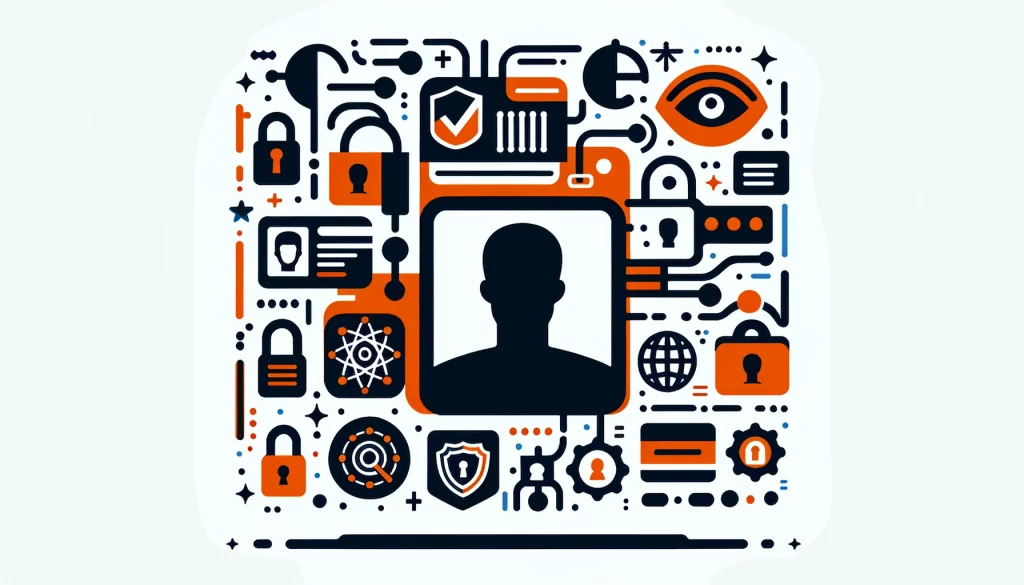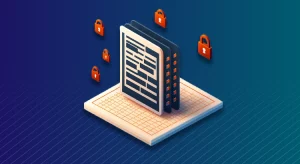
PII: Personally Identifiable Information

Understanding Personally Identifiable Information
Personally Identifiable Information (PII) is a crucial term in the world of data protection and privacy.
The United States and the European Union (EU) have different meanings for the term PII. It usually means any data that can identify a person, either directly or indirectly. The EU defines it clearly in the GDPR, but the US has different definitions in different regulations.
In recent years, the concept has received a lot of attention. This happens because companies collect, store, and process a lot of personal data. This has raised concerns about privacy and security.
This is important because it can reveal a person’s identity. This is valuable for organizations. However, it can be risky for individuals if not managed correctly.
Businesses and consumers need to understand PII and its implications. Companies collect and share large amounts of personal data. Being aware that this information is crucial.
Companies can protect personal info by knowing what types are at risk. They must also be aware of the potential dangers of misusing that info. With this knowledge, companies can develop effective strategies to safeguard personal information and maintain the trust of their customers.
The Legal Importance of PII
From a legal perspective, identifying PII is essential for ensuring compliance with data protection regulations. Companies and organizations need to be extremely careful with data. They should establish rules for how to use, keep, and protect data to prevent breaches and misuse.
Failure to do so can result in severe consequences, including fines and reputational damage.
Data protection regulations mandate strict requirements for handling PII. In the EU, the GDPR applies across all sectors. In the US, sector-specific regulations like HIPAA for healthcare and FERPA for education govern PII.
The rules aim to give people more control over their personal information. They also require organizations to be open about their practices.
Following these regulations is important. This is necessary because it is a legal requirement. Maintaining customer trust and protecting the company’s reputation is also important.
Examples of PII
Examples include a variety of information like names, contact details, initials, addresses, dates of birth, and biometric records.
Personal information like medical records, educational history, and employment details are all considered personally identifiable information. This also includes financial data, login credentials, IP addresses, MAC addresses, and cookies.
Determining the classification of Personally Identifiable Information involves assessing each case individually. This helps identify the specific risks linked to each type of information.
The sensitivity may vary depending on the context and the potential harm if someone misuses the knowledge. For example, people typically consider a person’s name and email less private than their medical or financial information.
Even harmless information can become sensitive when combined with other data. This can put individuals at risk of identity theft, fraud, or discrimination.
Types of PII: Linked and Linkable Information
PII further categorizes into two types: linked and linkable information. The first type of information includes names, addresses, email addresses, and ID numbers. This information can help identify people immediately.
Linkable PII is data that, when combined from various sources, can indirectly identify individuals. This includes information such as last names, geo data, and job employment data.
Knowing the difference between the two is important. This is because information that doesn’t directly identify someone can become identifiable when combined with other data.
In today’s world, organizations collect and analyze a lot of resources from various sources, which is extremely important.
By combining and comparing PII points, we can create detailed profiles of individuals. You can do this even without any single piece of information directly identifying them.
Digital Traces
The GDPR acknowledges that individuals leave digital traces associated with devices, internet protocol addresses, and other digital identification tags.
These clues can help create detailed profiles of people, linking their online identities with their real-life selves.
This highlights the importance of protecting PII, as the aggregation of seemingly innocuous pieces of information can lead to the identification of individuals.
In today’s digital world, people use many online services. They leave behind resources that people can collect, analyze, and use for different reasons.
This information can include browsing history, search queries, social media activity, and location data, among others.
These digital clues may not always reveal a person’s identity. However, one can piece them together to create a complete picture of a person’s online behavior and appearance.
Organizations must be cautious when handling digital traces. Protecting these traces is important for them, just as they would safeguard other types of personal information.
The Challenges of Defining PII
Evaluating each situation individually is important. This will help you determine if you should classify certain info as Personally Identifiable Information. You should also consider how sensitive this information may be.
For instance, ad services may use cookies and device IDs. Ad services use cookies and device IDs. In some cases, individuals may consider this information personally identifiable. In some cases, it may not be easy to identify individuals based on the situation.
Organizations may struggle to comply with PII protection regulations because there is no clear and universal definition. This confusion can lead to variations in how different industries and regions recognize, categorize, and safeguard personal information.
Companies must stay updated on the latest rules and guidelines. They should also assess the potential risks of the data they manage.
Best Practices for Protecting PII
To effectively protect PII and maintain compliance with data protection regulations, organizations should adopt a range of best practices. These include:
- Conducting regular data audits to identify and classify PII within the company’s systems and processes.
- Implementing strong security measures, such as encryption, access controls, and monitoring, to prevent unauthorized access.
- Developing and enforcing clear data governance policies that outline the appropriate collection, use, retention, and disposal.
- Providing regular training and awareness programs to employees to ensure they understand their responsibilities in handling PII.
- Conducting regular risk assessments and vulnerability scans to identify and address potential threats to PII.
- Establishing incident response plans to effectively manage and mitigate the impact of data breaches.
- Engaging with trusted third-party providers who demonstrate a commitment to data protection and compliance with relevant regulations.
Companies can build a strong system by following best practices. This system will keep personal information safe and maintain the trust of customers and partners.
The Future of PII
As technology advances, the collection and use of personal data is becoming more common. This means the concept of PII is likely to change over time.
Artificial intelligence and the Internet of Things are growing rapidly. They will bring both challenges and opportunities in data protection and privacy. The rise of these technologies will change how we think about keeping our information safe. We will create new ways to safeguard our personal data.
Therefore, organizations need to stay alert and flexible when handling PII. They should keep up with new trends and adjust their strategies as needed.
We expect new laws and guidelines to change the rules for Personally Identifiable Information. These changes will help to keep up with the evolving use of personal data.
Organizations should work with legal and privacy experts to navigate the complex and ever-changing environment. This collaboration will help them prepare for any challenges that may arise. By seeking guidance from experts, organizations can stay informed and compliant with laws and regulations.
This proactive approach can also help them anticipate and address potential risks before they become major issues. This will ensure ongoing compliance and the protection of individuals’ rights.
Conclusion
In conclusion, PII is a critical concept in the realm of data protection and privacy. Companies must identify, categorize, and protect their information. This is necessary to comply with regulations and maintain the trust of customers and partners.
As technology changes, businesses need to keep up with the latest rules and ways to protect people’s personal information.
Organizations can establish a solid base for responsible data management by knowing the various types of resources. They should also be aware of the risks associated with misuse. Additionally, they must understand the legal and ethical obligations for protecting PII.
This will help build trust, protect people’s rights, and support the responsible and sustainable growth of the digital economy.
Contact our team for a demo session and learn how DataSunrise protects PII.
